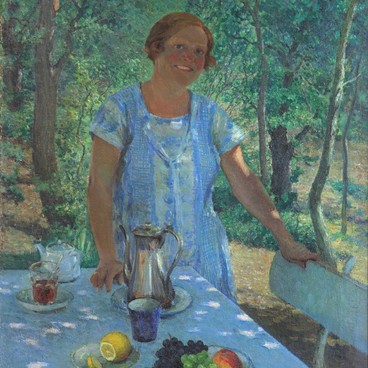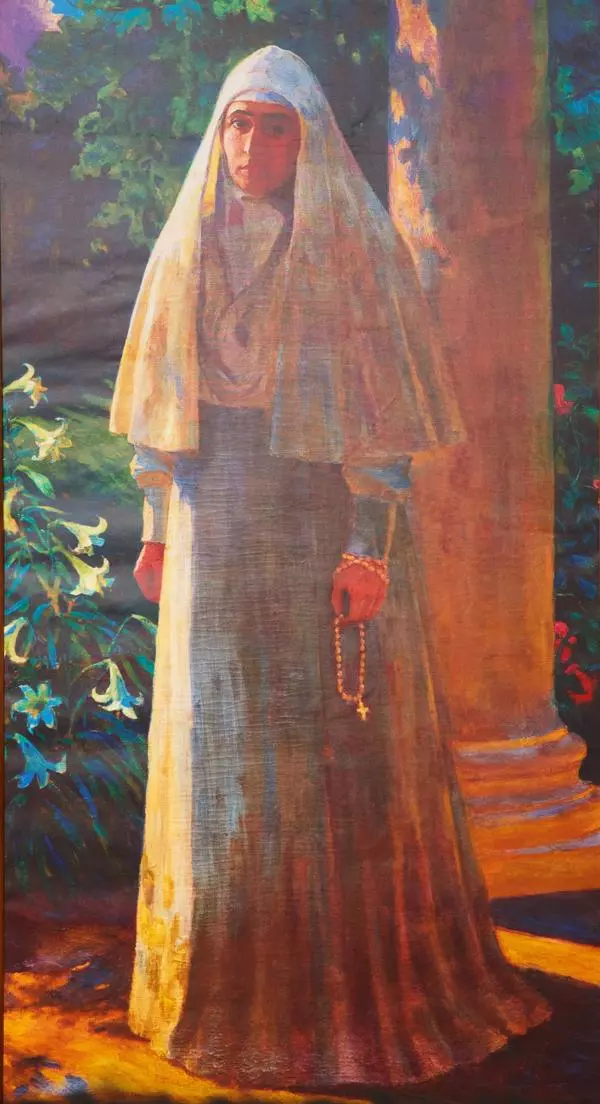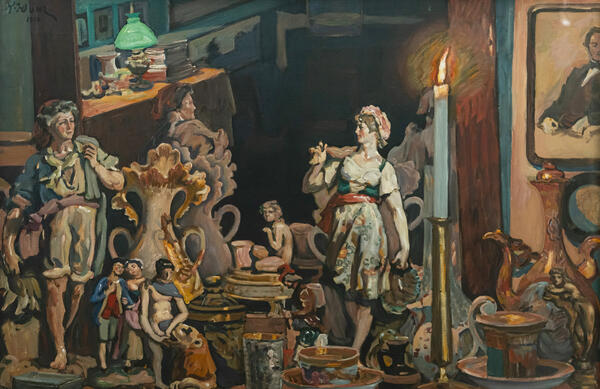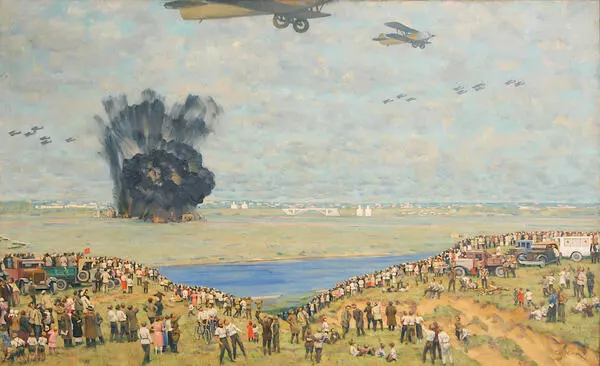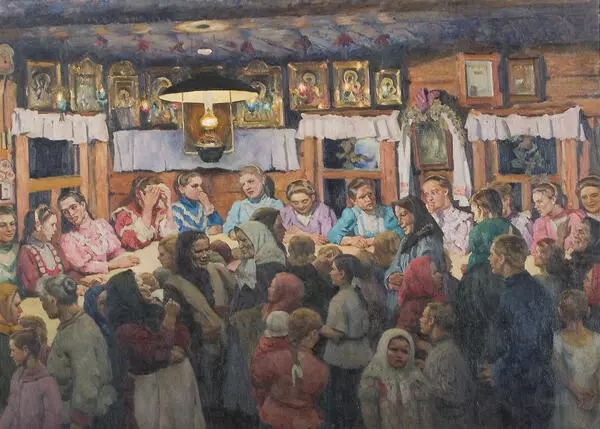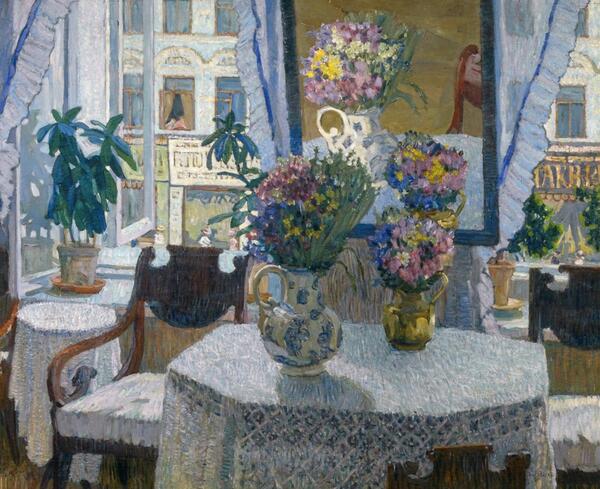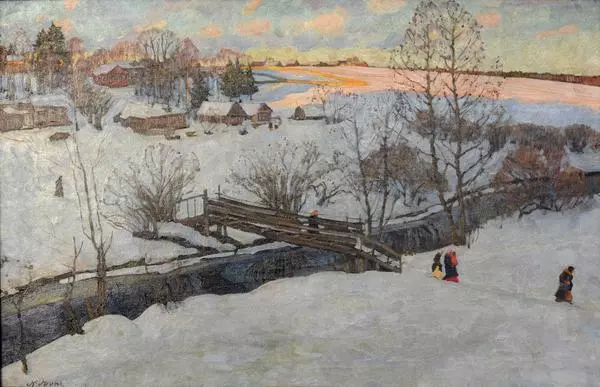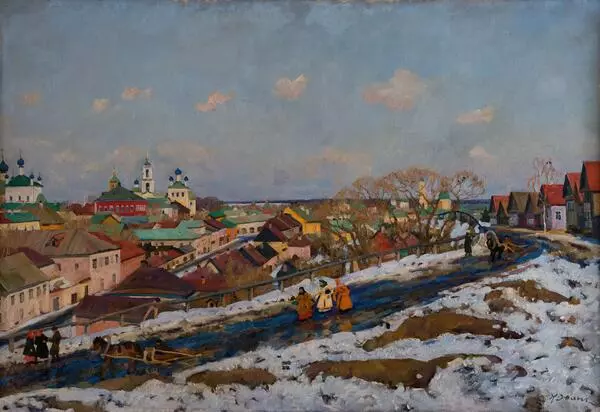Having gained fame at the end of the 19th century, artist Konstantin Yuon participated in the vernissages of the Wanderers and in the exhibitions of the association Mir iskusstva (World of Art), in which he was a member. Konstantin Fyodorovich worked not only in different genres of painting but also in several fields of art. He was a stage designer, played music professionally and, of course, painted pictures. Leading critics and art historians of that time favoured him and collectors too eagerly acquired his paintings.
After the revolution of 1917, the artist continued to work actively. As a response to revolutionary events, he created the monumental painting New Planet, where a crowd of people watches the birth of a giant crimson ball.
However, landscape remained Yuon’s favourite genre throughout his life. August Evening. Ligachyovo was created by him in 1922, when the master was already almost 50 years old. In that period of the artist’s life, the theme of autumn — the beautiful withering of nature — prevailed in his works. Despite the growing dusk, the picture is literally permeated with light, which seeps through the depleted crowns of the trees that bend over the gazebo and pours from the lamp on the table. By the way the shadow from the table lies on the ground, it can be assumed that the soft light also flows from the windows of the house, which remained outside the canvas.
Actively using some of the principles of Impressionism, Yuon remained a very Russian artist, successor of the traditions of Russian Realism in painting.
In 1948, Konstantin Fyodorovich, among several others, created another canvas — August Evening. The Last Ray. Ligachyovo. In fact, these canvases make up a diptych. While the first depicts a table in the garden, at which a married couple reads and holds a lazy talk, the second shows a veranda, whose windows overlook the very garden. In that picture, the sun has not set yet but the evening is already near — just in a few minutes the light of the lamp will illuminate the space above the table in the garden and the young people, sitting comfortably around it with open books, will start a conversation.
But while The Last Ray is a rural landscape traditional for Russian painting, this canvas is not just saturated with peace and serenity of nature, it also shows the tenderness and warmth of human relations. If taking a closer look, one could see the third character of this picture in the shadow of the table — a dog of the Dalmatian breed that has walked up to its owners. In fact, we are faced with an idyll that unites all living things: plants, the animal world, man and light, with which this picture is filled to the brim.
However, landscape remained Yuon’s favourite genre throughout his life. August Evening. Ligachyovo was created by him in 1922, when the master was already almost 50 years old. In that period of the artist’s life, the theme of autumn — the beautiful withering of nature — prevailed in his works. Despite the growing dusk, the picture is literally permeated with light, which seeps through the depleted crowns of the trees that bend over the gazebo and pours from the lamp on the table. By the way the shadow from the table lies on the ground, it can be assumed that the soft light also flows from the windows of the house, which remained outside the canvas.
Actively using some of the principles of Impressionism, Yuon remained a very Russian artist, successor of the traditions of Russian Realism in painting.
In 1948, Konstantin Fyodorovich, among several others, created another canvas — August Evening. The Last Ray. Ligachyovo. In fact, these canvases make up a diptych. While the first depicts a table in the garden, at which a married couple reads and holds a lazy talk, the second shows a veranda, whose windows overlook the very garden. In that picture, the sun has not set yet but the evening is already near — just in a few minutes the light of the lamp will illuminate the space above the table in the garden and the young people, sitting comfortably around it with open books, will start a conversation.
But while The Last Ray is a rural landscape traditional for Russian painting, this canvas is not just saturated with peace and serenity of nature, it also shows the tenderness and warmth of human relations. If taking a closer look, one could see the third character of this picture in the shadow of the table — a dog of the Dalmatian breed that has walked up to its owners. In fact, we are faced with an idyll that unites all living things: plants, the animal world, man and light, with which this picture is filled to the brim.
